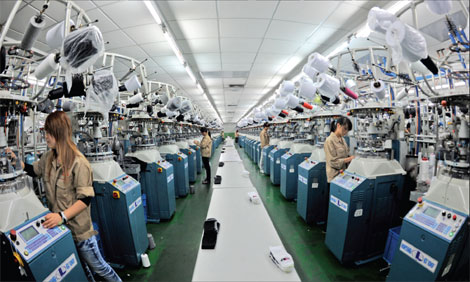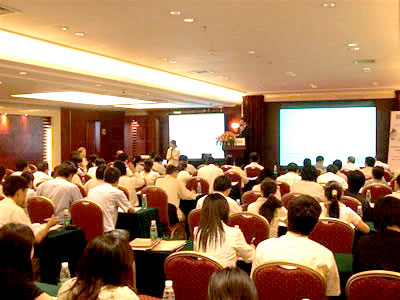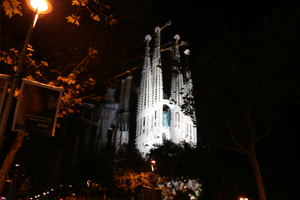|
A group of Japanese tourists descend on Weaver's Studio, a textile boutique in Kolkata, specialising in handcrafted, handwoven clothes. They walk through the three rooms, admiring the hanging silk saris in jewel colours of magenta, turquoise, aquamarine, emerald and purple. In another room are block-printed fabrics with swirling green vines and orange flowers. The Japanese women utter little exclamations of delight as they sort through silk stoles and organic cotton tunics. The studio's founder, Darshan Shah, an elegant petite woman with straight black hair, answers questions. An hour later, the group heads to the airport with suitcases full of new clothes. In the southern city of Bangalore, Cinnamon boutique is exhibiting clothes designed under "The Malkha Project" label. Three young fashion designers ¡ª two Indian and one American ¡ª came together to design clothes made from a relatively new homegrown fabric, the name is a combination of the words Malmal cotton and handspun Khadi. "As a New York fashion designer, I love Malkha because it taps into the desire for authenticity," says Peter D'Ascoli, who collaborated with the designers Mayank Mansingh Kaul and Aneeth Arora to create clothes used handwoven Malkha and then showcased them all over India. Traditional Indian textiles are undergoing an interesting revival in India these days. Rather than shunning home-grown, hand-woven fabrics in favour of laser-cut clothes, imported chiffons and georgettes, fashion designers and textile specialists are embracing India's indigenous fabrics, such as khadi, cotton and silk, and imbuing these textiles with contemporary flair. "Handmade fabric is India's USP," says Shah of Weaver's Studio. "It's what we are known for. How can we let it die?" Weaver's Studio uses traditional tussar silk but "contemporises" it by painting, rather than weaving borders on it. Other fabric specialists market handwoven fabrics such as malkha and khadi to local and foreign markets. In Delhi, Rta Kapur Chishti, the author of the book Saris of India, champions this unstitched garment. She runs a sari school and teaches young Indians who are more comfortable in jeans and a T-shirt to wear their heritage gracefully and with style. Chishti also sources khadi fabric and sells it under her label, Ananda Khadi. In Hyderabad, a woman named Uzramma works with local weavers and helps them attain self-sustainability. "This type of handloom weaving, which was dominant until the end of the 18th century, has now completely vanished," she says. Uzramma hopes to revive that by promoting handwoven fabrics sourced directly from the weavers and sold to consumers at crafts fairs such as Dastkar.
Textile weaving has a long hoary history in India. Manuscripts from the first century AD such as the Periplus Maris Erythraei talk about textile production in coastal India. Excavations at Fostat, a town near Cairo in Egypt, has revealed cotton fragments with block-resist prints identical to those found in Gujarat. The same fabric fragments were found in Indonesia, pointing to a flourishing textile trade along the Silk Route. As the textile researcher Rahul Jain, says in his book Rapture: the art of Indian Textiles, the late-Mughal period influenced the patterns used in Indian textiles - foliate motifs and the symmetrical patterns that were popular in the Islamic world. During this time, India produced lovely weaves with poetic names such as bafta, nainsukh, dosuti, moree, jamdani, mulmul, chint (which gave the English chintz its name), mashru, himroo and others. Legend has it that the Mughal emperor Shah Jahan - who built the Taj Mahal - once criticised his daughter for appearing almost nude in the gardens. She showed him that she was wearing not one, but seven layers of malmal fabric, woven so fine that it was hardly visible. This was called "woven air" fabric. Spinning yarn became a political statement during India's freedom struggle, when Mahatma Gandhi used khadi ¡ª handspun and handwoven cloth ¡ª as a tool to protest against British imperialism. After India gained independence, handspun and handwoven clothes gradually fell out of favour. In the 1970s and 1980s, Indian women fell in love with machine-made polyester fabric that was imported from China. These fabrics copied Indian brocade and Paisley patterns and were marketed in India as "China silk".
|
|
Traditional Indian textiles get a turn on the fashion stage
Updated: 2011-11-14 Source: CTEI

Recommended News
Photo Gallery
Most Popular



